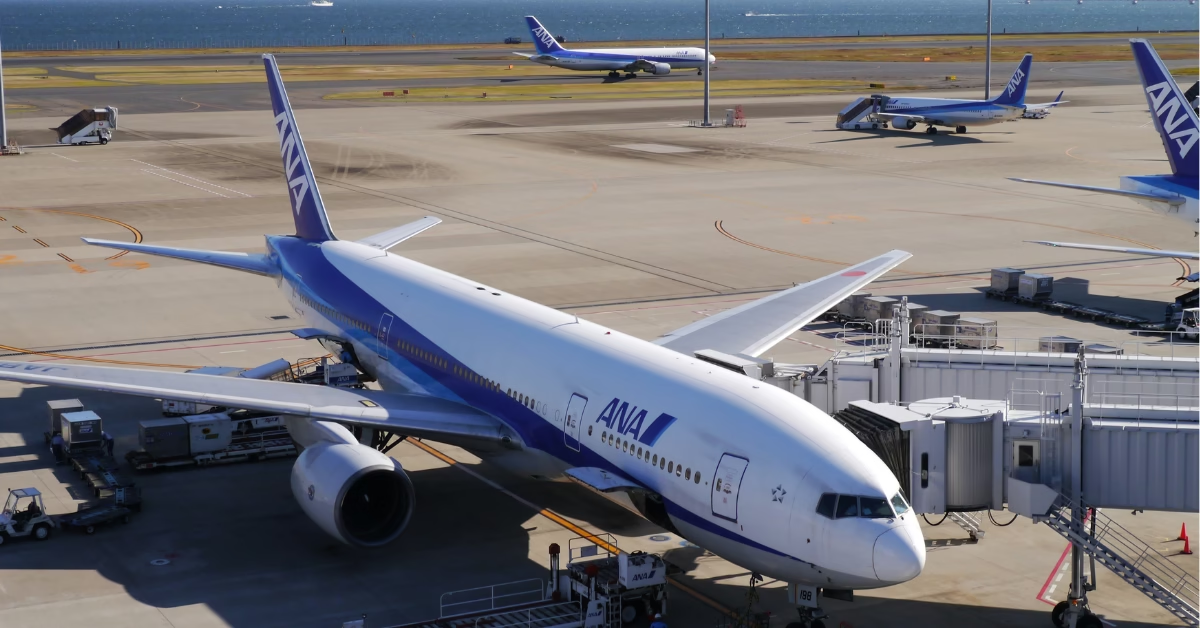The top 10 biggest airport in the world are more than travel points. They are global gateways that serve millions of people each year. These airports stand out due to their huge land area, high passenger traffic, and modern facilities.
This blog will take you through each one. We’ll cover their size, design, traffic data, and why they are important in global travel.
1. King Fahd International Airport, Saudi Arabia
King Fahd International Airport (DMM) is the biggest airport in the world by area. It is located in Dammam, Saudi Arabia. This airport covers around 780 square kilometers.
That’s almost the size of a small city. Yet it doesn’t serve as many passengers as you may expect. Around 10.9 million people travel through this airport every year. Still, its size and design make it very important.
King Fahd Airport has space for future growth. It has wide runways and modern terminals. There are large hangars and cargo areas too. It also serves military use in some areas.
This airport may not be the busiest, but its land size ranks it number one in the world.
2. Denver International Airport, USA
Denver International Airport (DEN) is the second-largest airport in the world by land. It’s also the biggest in the United States. It spreads across 137 square kilometers.
Its roof design is famous. It looks like snowy mountains from a distance. Denver Airport serves over 64 million passengers each year.
It has six long runways and one large terminal split into three concourses. Airlines like United and Southwest use it as a major hub. Despite delays due to weather in winter, it remains efficient.
Its location near the center of the U.S. makes it a perfect hub for coast-to-coast travel.
3. Dallas/Fort Worth International Airport, USA
Dallas/Fort Worth Airport (DFW) is another huge airport in the United States. It covers about 70 square kilometers of land.
It is the main base for American Airlines. DFW has seven runways and five terminals. It handles over 69 million passengers each year.
The airport is always expanding. New terminals and rail connections are being added. It links travelers to over 260 destinations worldwide.
This airport plays a big role in both domestic and international travel. Its location between two major cities helps it grow faster.
4. Orlando International Airport, USA
Orlando International Airport (MCO) covers about 53 square kilometers. It is a key entry point for tourists visiting Florida.
Millions fly into Orlando each year. In fact, over 50 million passengers passed through in recent years. The airport is always busy due to attractions like Disney and Universal.
The airport has four runways and two main terminals. A new Terminal C was opened to handle more traffic.
MCO is still expanding, with bigger plans ahead. It’s one of the fastest-growing airports in the U.S. in terms of land and travelers.
5. Washington Dulles International Airport, USA
Washington Dulles Airport (IAD) is located in Virginia, near the U.S. capital. It covers 52 square kilometers of land.
Designed by Eero Saarinen, the terminal has a modern look. It opened in 1962 and has five runways today.
Dulles handles over 27 million passengers per year. It connects Washington, D.C., to many global destinations. It is also a hub for United Airlines.
Ongoing updates aim to improve security, passenger flow, and terminals.
6. Beijing Daxing International Airport, China
Beijing Daxing International Airport (PKX) is one of the newest large airports in the world. It opened in 2019 and covers around 47 square kilometers.
The airport is designed like a starfish. This shape makes it easy for passengers to move quickly between gates. It was built to reduce pressure on Beijing Capital Airport.
It currently has four runways and plans to add more. Its goal is to handle 100 million travelers per year in the future. This would make it one of the busiest airports worldwide.
7. George Bush Intercontinental Airport, USA
Located in Houston, Texas, this airport spans 40 square kilometers. It’s a major U.S. hub, especially for United Airlines.
George Bush Airport serves over 40 million people each year. It has five terminals and two runways, with more expansions in progress.
The airport is important for both domestic and international flights. It has good cargo services and connects to Latin America strongly.
8. Shanghai Pudong International Airport, China
Shanghai Pudong Airport (PVG) also covers around 40 square kilometers. It is one of China’s most important airports for global travel.
The airport handles over 70 million passengers annually. It has four long runways and multiple terminals.
PVG is key for trade, tourism, and cargo in Asia. It links China to cities across the world and continues to expand with new runways and buildings.
9. Cairo International Airport, Egypt
Cairo Airport is the largest in Africa by land area. It spans 37 square kilometers and handles over 15 million travelers a year.
This airport is a major link between Africa, Europe, and the Middle East. It has three terminals and several ongoing upgrade projects.
Cairo Airport plans to expand passenger capacity soon to 30 million yearly.
10. Suvarnabhumi Airport, Thailand
Bangkok’s Suvarnabhumi Airport (BKK) covers 32 square kilometers. It is the main international airport in Thailand.
It opened in 2006 and now serves over 60 million people each year. It is a top hub in Southeast Asia. The airport has two runways and multiple terminals.
A major expansion project is underway. It includes a fourth runway and a new terminal. By 2033, BKK aims to serve up to 150 million passengers annually.
Comparing the Top 10 Biggest Airports by Size and Traffic
Here’s a simple table showing land size and passenger traffic of each airport:
| Airport | Country | Size (sq km) | Yearly Passengers |
|---|---|---|---|
| King Fahd (DMM) | Saudi Arabia | 780 | 10.9 million |
| Denver (DEN) | USA | 137 | 64 million |
| Dallas/Fort Worth (DFW) | USA | 70 | 69 million |
| Orlando (MCO) | USA | 53 | 50 million |
| Washington Dulles (IAD) | USA | 52 | 27 million |
| Beijing Daxing (PKX) | China | 47 | 72 million* |
| George Bush (IAH) | USA | 40 | 40 million |
| Shanghai Pudong (PVG) | China | 40 | 70 million |
| Cairo (CAI) | Egypt | 37 | 15 million |
| Suvarnabhumi (BKK) | Thailand | 32 | 60 million |
*Planned future capacity.
Facilities and Innovation in Mega Airports
Big airports also lead in technology and services. From smart gates to self-bag check-in, modern airports are always upgrading.
Some like Beijing Daxing and Denver use solar energy and AI-based security. They aim to improve passenger experience and reduce wait times.
How These Airports Handle Millions of Travelers
Handling large crowds is a big challenge. These airports use many systems to manage traffic.
They have real-time monitoring, automated check-ins, and fast baggage systems. These features keep flights on time and people moving smoothly.
Future of the World’s Biggest Airports
Airports are planning bigger expansions. Bangkok, Beijing, and Cairo are all building new terminals and runways.
Green energy, AI, and digital systems will lead the future of airport development.
You May Also Like: When Will JJK Season 3 Come Out? Release Date & All You Need to Know
Conclusion
The top 10 biggest airport in the world are much more than large spaces. They’re vital links in global travel. Each one has a role in moving people, cargo, and ideas across borders.
Their size helps them handle traffic, plan growth, and serve as national symbols of progress.
FAQs
1. Which is the biggest airport in the world by land?
King Fahd International Airport in Saudi Arabia is the largest by land area.
2. Which is the busiest airport by passengers?
Hartsfield–Jackson Atlanta (not in this list by area) often ranks as the busiest by passenger volume.
3. Why do airports need so much land?
Airports need runways, terminals, cargo zones, and safety areas that all require space.
4. Is bigger always better for airports?
Not always. Efficiency, design, and location matter too.
5. What is the biggest airport in Asia?
Beijing Daxing is among the largest and most advanced in Asia.
6. Which is the biggest airport in the USA?
Denver International is the largest by land size in the United States.
7. Are there bigger airports coming in the future?
Yes, several projects in Asia and the Middle East are in progress.
8. How are airport sizes measured?
Most use land area in square kilometers, while others use terminals or runways as metrics.
9. Do larger airports mean better travel experience?
Not always. Some smaller airports offer faster service and shorter walking distances.
10. What is the main benefit of a large airport?
They offer more flights, more facilities, and better connections globally.

Evelyn White is an experienced content writer with a background in lifestyle, trends, and practical advice. With several years of writing across digital platforms, she specializes in making everyday topics accessible, informative, and engaging. Her goal is to deliver trustworthy, reader-focused content that’s both useful and easy to understand.
Discover more from Try Hard Guides
Subscribe to get the latest posts sent to your email.

